How to Inspect Metal Sheets at High Speed and detect defects
Published on: Oct 08, 2024

Written by: Soumen das
How to Inspect Metal Sheets at High Speed: Techniques and Technologies
Metal sheet inspection plays a critical role in industries such as automotive, aerospace, electronics, and manufacturing, where quality control is essential for product reliability and safety. Defects such as surface scratches, dents, cracks, and corrosion can lead to mechanical failures, causing costly downtime and safety risks. Therefore, inspecting metal sheets for defects is not only important but needs to be done with great speed and precision to match the high throughput of modern production lines.
In this article, we will explore the technologies and methods used to inspect metal sheets at high speed, highlighting key challenges and best practices to achieve both accuracy and efficiency.
Why Metal Sheet Inspection is Necessary
Metal sheets are used in a wide variety of applications, from automotive panels to electronic enclosures. Any defect in these sheets can compromise the structural integrity or aesthetic quality of the final product. Some of the common defects found in metal sheets include:
- Surface scratches and abrasions
- Dents and bumps
- Corrosion and oxidation spots
- Roll marks and cracks
- Burrs or rough edges from cutting processes
- Inclusions or foreign particles
Given that these defects can occur at any stage of production—rolling, stamping, cutting, or coating—implementing high-speed inspection solutions ensures that only high-quality materials proceed to the next stage.
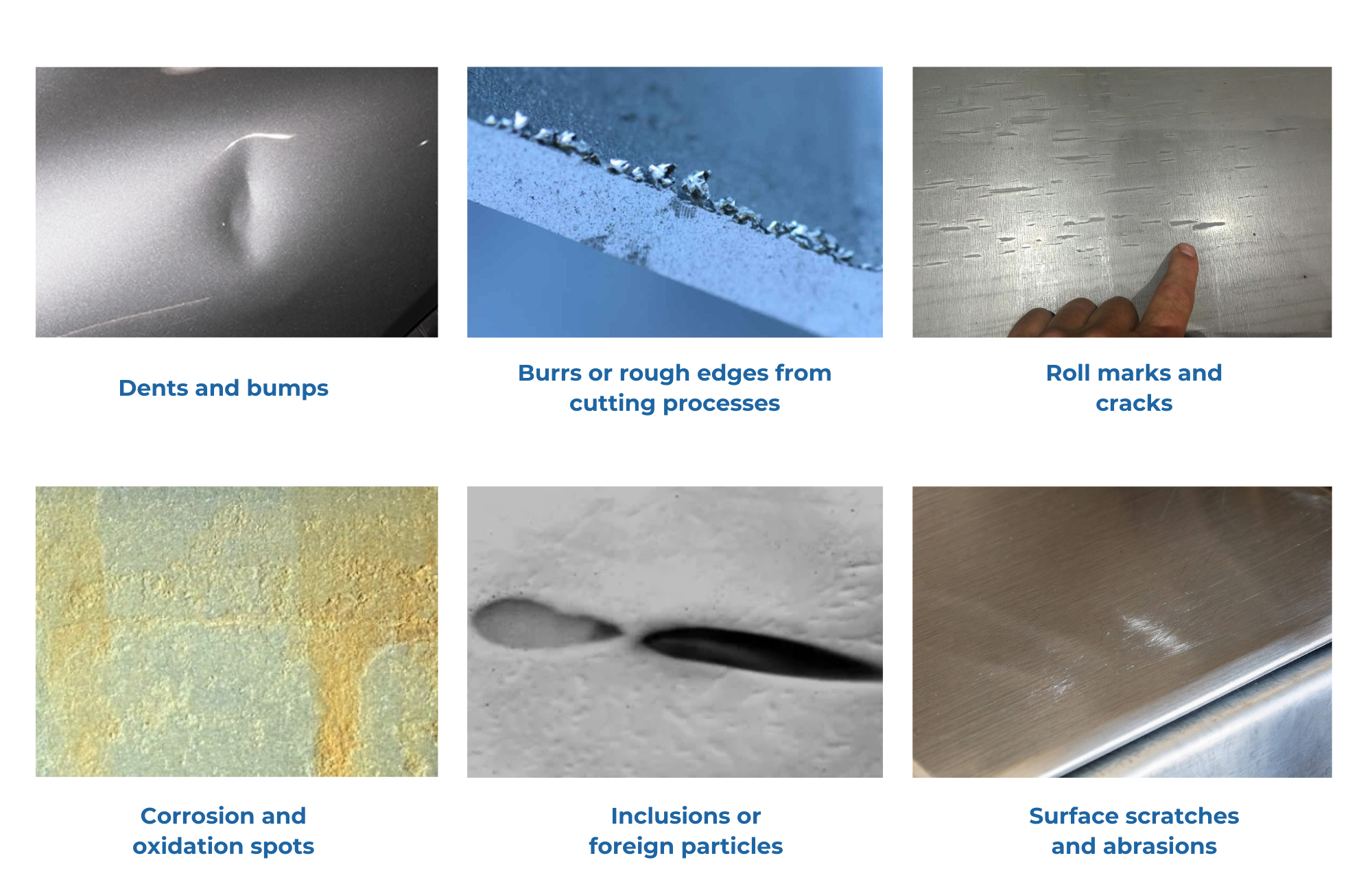
Challenges of High-Speed Metal Sheet Inspection
Inspecting metal sheets in a high-speed production environment presents several challenges:
High Throughput: Modern manufacturing lines often run at high speeds, with metal sheets moving rapidly. Inspecting these at speed without compromising accuracy can be difficult.
Reflective Surfaces: Metal sheets are often shiny or reflective, which can make visual inspection using conventional cameras problematic due to glare and reflections.
Diverse Defect Types: Metal sheets may exhibit a wide variety of defect types (e.g., scratches, cracks, dents), each requiring different detection techniques. Additionally, defects can vary in size from microscopic imperfections to larger surface anomalies.
Environmental Factors: Production environments often involve heat, dust, and vibrations, all of which can interfere with inspection equipment.
To overcome these challenges, manufacturers employ advanced imaging technologies and automated systems that can handle high-speed inspections while delivering precise defect detection.
Technologies for High-Speed Metal Sheet Inspection
Several technologies are employed for the high-speed inspection of metal sheets. These include advanced imaging systems, machine vision, and specialized sensors.
Line-Scan Cameras
Line-scan cameras are one of the most commonly used tools for inspecting metal sheets at high speeds. Unlike traditional area-scan cameras that capture an entire frame at once, line-scan cameras capture images line by line. This allows for continuous, high-resolution scanning as metal sheets move through the production line.
Benefits:
- High-Speed Inspection: Line-scan cameras can capture thousands of lines per second, allowing them to keep pace with fast-moving metal sheets.
- High Resolution: These cameras can capture minute details, making them ideal for detecting tiny surface defects like scratches and cracks.
- Wide Field of View: Line-scan cameras can cover large metal surfaces with ease.
Key Considerations:
- Lighting: To ensure optimal performance, line-scan cameras require uniform lighting to reduce glare and shadows, particularly when inspecting shiny metal surfaces.
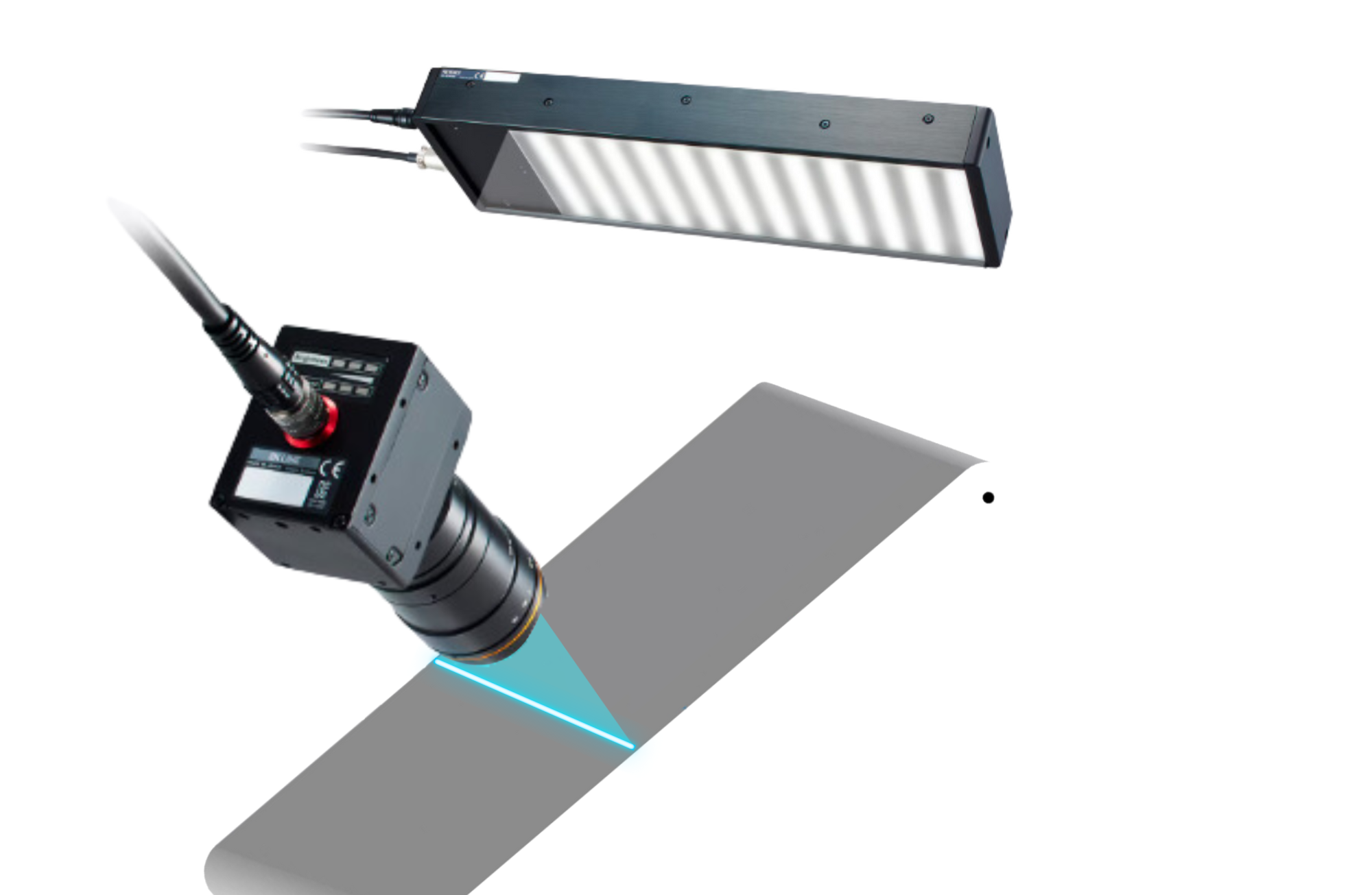
Contact Image Sensors (CIS)
As mentioned in our earlier article on CIS cameras, CIS technology is ideal for surface inspection where compact, high-resolution, and fast image capture is required. CIS cameras scan metal sheets line-by-line as they pass through, capturing even the smallest of defects with great precision.
Benefits:
- Compact Design: CIS cameras have a smaller form factor compared to traditional imaging systems, allowing easy integration into existing production lines.
- High Accuracy: The close proximity of the sensor to the metal sheet ensures minimal distortion and superior image quality.
- Built-in Lighting: CIS cameras come with built-in uniform lighting, which eliminates glare issues common with reflective surfaces like metal sheets.
.png)
Thermal Imaging
Thermal cameras detect infrared radiation emitted by objects. In metal sheet inspection, thermal imaging can be used to detect defects like cracks, which may not be visible to the naked eye but can show up as temperature variations due to differences in heat retention.
Benefits:
- Detects Subsurface Defects: Thermal imaging can identify cracks, voids, and inclusions beneath the surface that conventional visual inspection might miss.
- Non-contact Method: This method does not require direct contact with the metal sheet, making it ideal for high-speed, automated inspection.
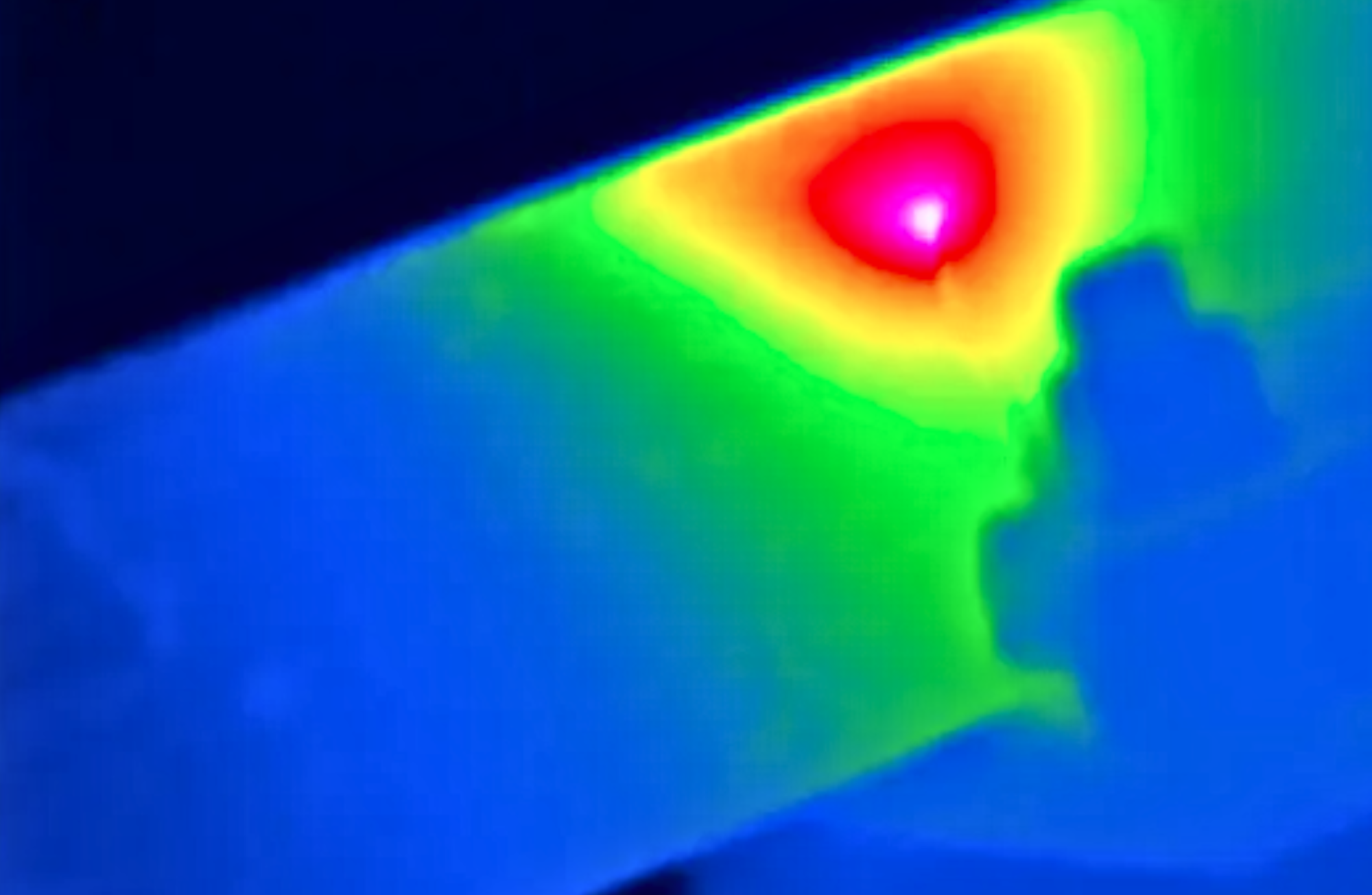
Laser Profilometry
Laser profilometry uses lasers to scan the surface of metal sheets and generate 3D surface profiles. This method is particularly useful for detecting height variations such as dents, bumps, and uneven surfaces.
Benefits:
- High Precision: Laser profilometers provide extremely accurate surface measurements, making them ideal for detecting surface flatness, dents, or raised defects.
- High-Speed Capability: Laser profilometry systems are designed to work at high speeds, making them well-suited for integration into fast production lines.
Key Considerations:
- Alignment and Calibration: The laser system needs to be properly aligned and calibrated to ensure accurate measurements, especially at high speeds.
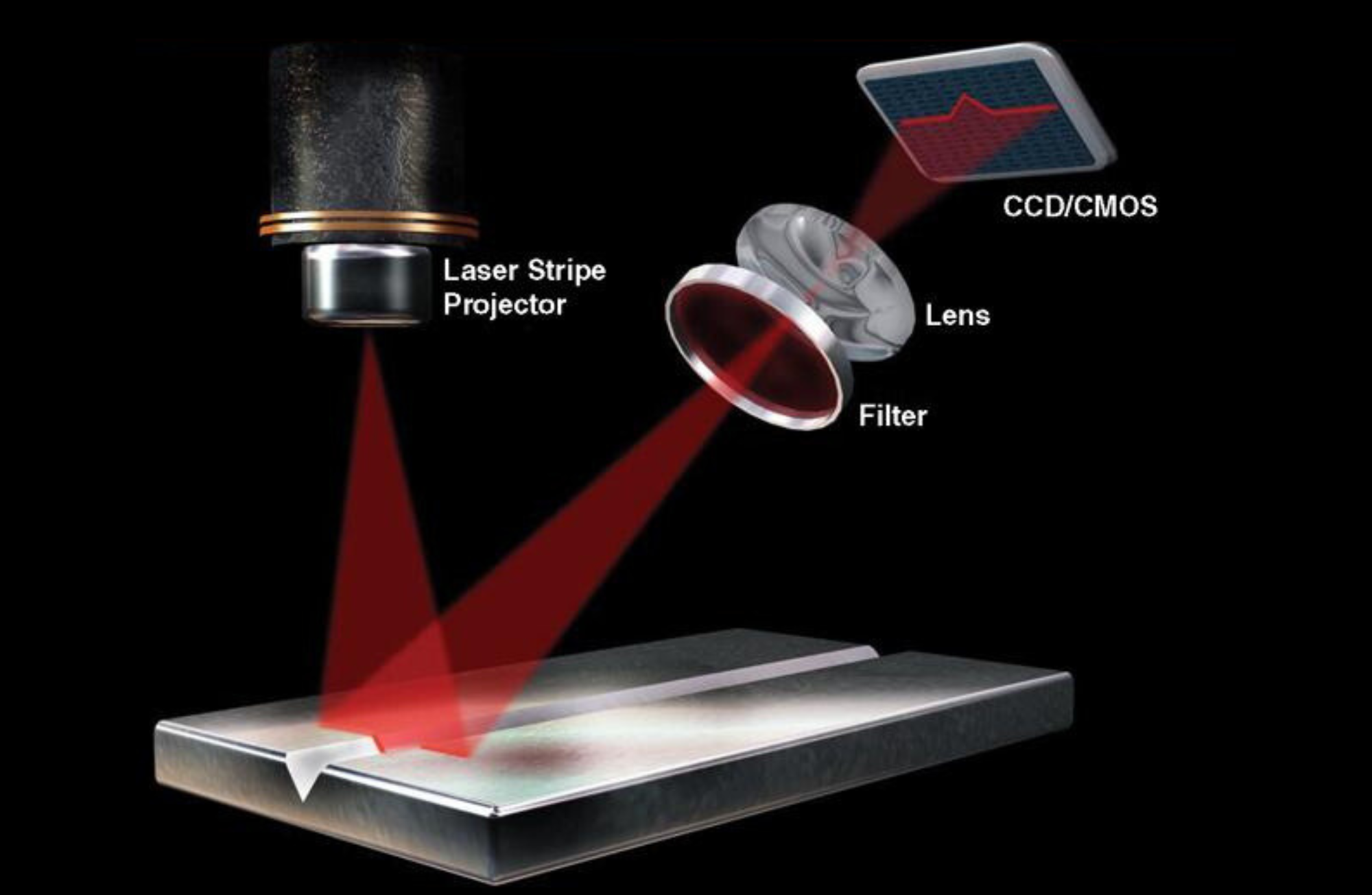
Machine Vision Systems
Machine vision systems use a combination of high-resolution cameras, powerful software, and machine learning algorithms to detect defects on metal sheets. These systems are highly flexible and can be programmed to identify a wide variety of defect types.
Benefits:
- Automated Defect Detection: Machine vision systems can automatically detect and classify defects with high accuracy, reducing the need for manual inspection.
- Real-Time Monitoring: These systems provide real-time feedback, allowing for immediate corrective action if defects are detected.
- Customization: Vision systems can be tailored to specific defect detection needs, whether it’s identifying scratches, cracks, or contamination on metal surfaces.
Key Considerations:
- Data Processing Speed: Machine vision systems must be able to process large volumes of data at high speeds to keep up with fast production lines. Advanced processors and optimized algorithms are necessary to achieve this.
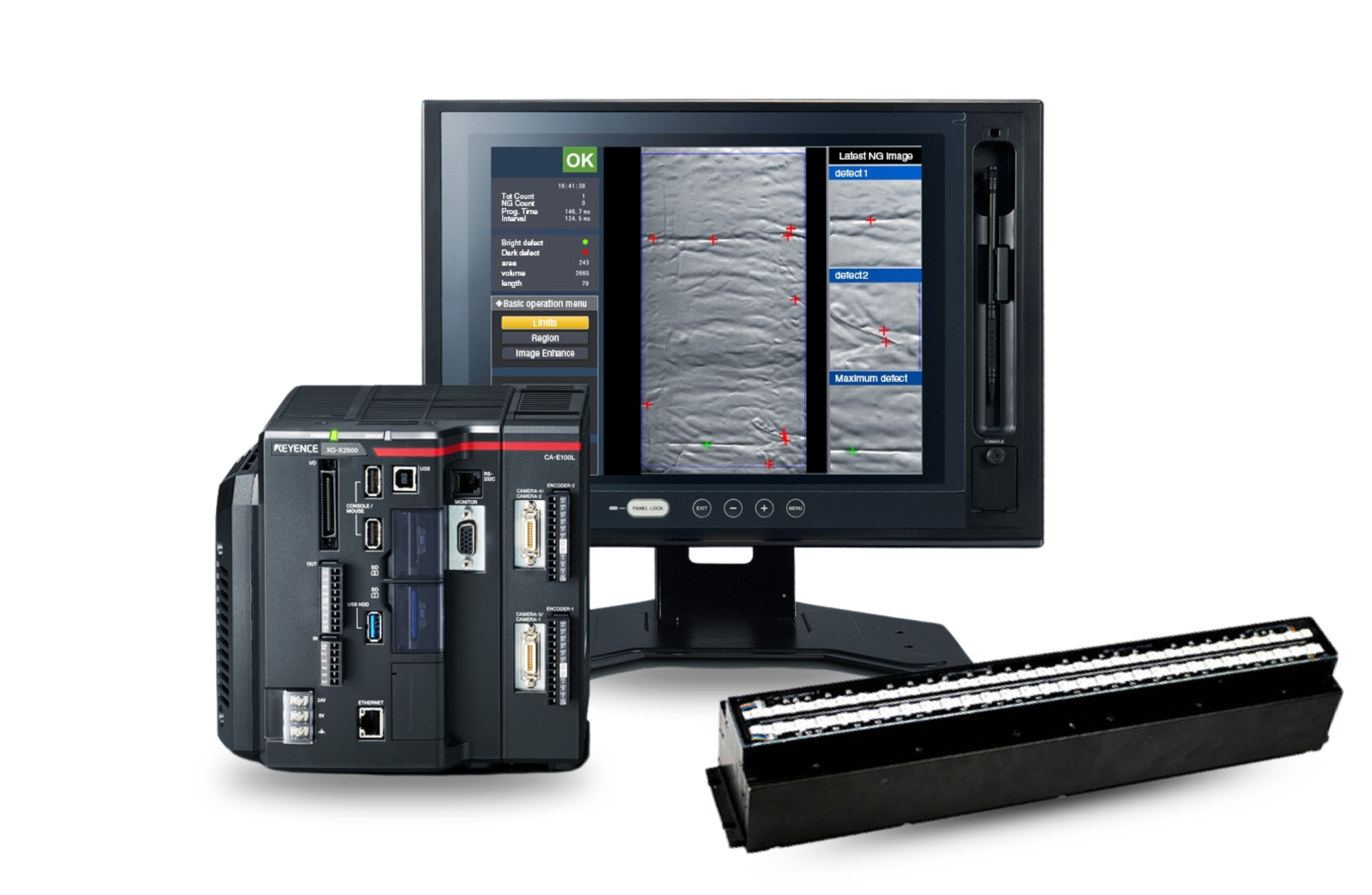
AI-Powered Defect Detection
AI and machine learning are increasingly being integrated into metal sheet inspection systems to enhance defect detection capabilities. These systems can be trained using large datasets of defective and non-defective metal surfaces, enabling them to "learn" what constitutes a defect.
Benefits:
- Adaptive Learning: AI systems improve over time by learning from new data, making them more accurate at detecting subtle defects.
- Reduced False Positives: AI can help reduce false positives by learning the difference between acceptable variations and actual defects.
- Real-Time Classification: AI can classify defects by type and severity, which can help in sorting metal sheets for further processing or rejection.
Key Considerations:
- Training Data: AI systems require large, labeled datasets for training, which can be time-consuming to develop. Continuous monitoring and updating of the system are required for optimal performance.
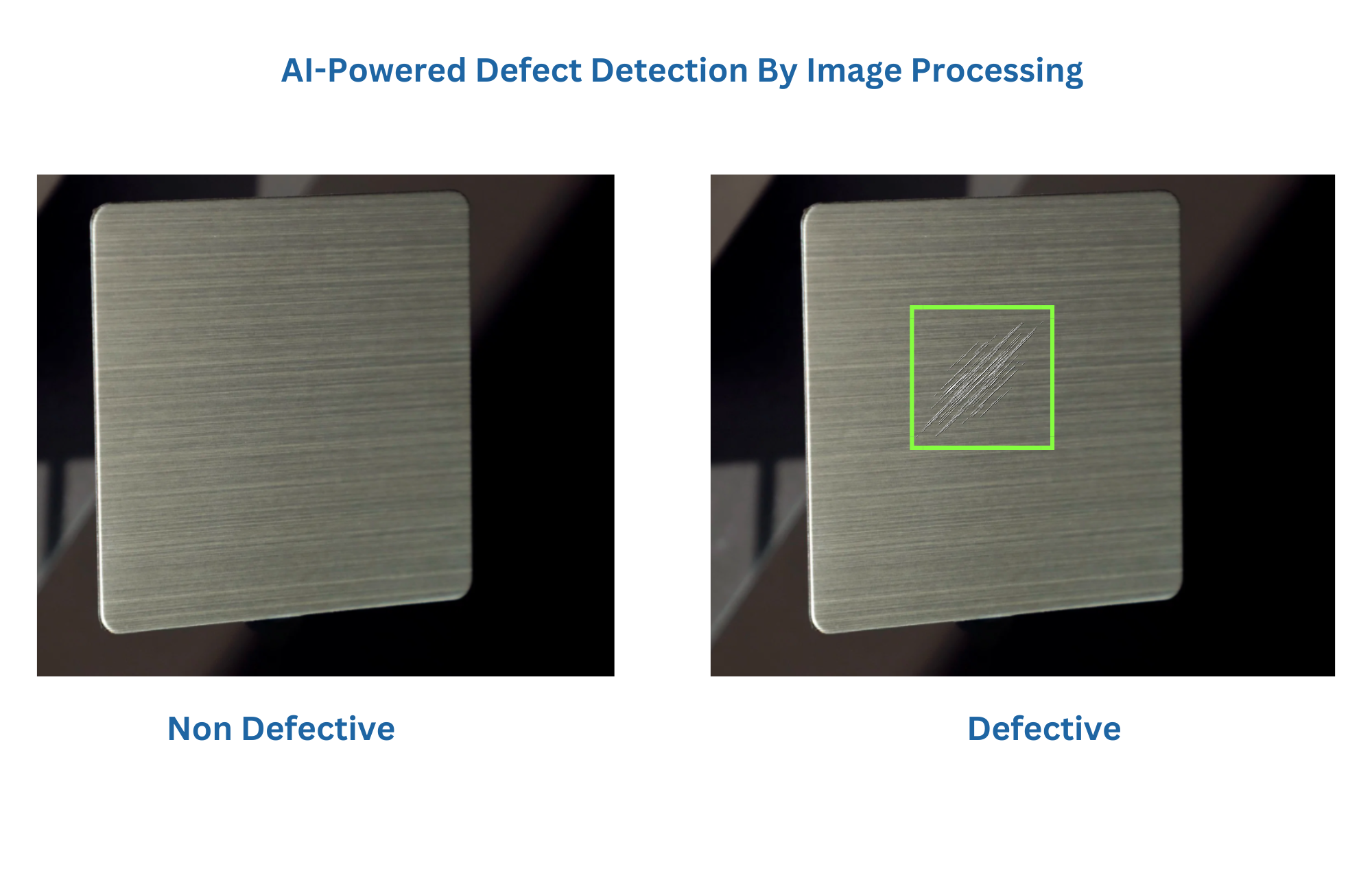
Best Practices for High-Speed Metal Sheet Inspection
To ensure effective and efficient metal sheet inspection at high speeds, it is essential to follow best practices in terms of both equipment setup and system integration:
Ensure Proper Lighting
Proper lighting is crucial for high-speed inspections, especially when dealing with reflective surfaces like metal sheets. Using diffuse lighting systems or polarizing filters can reduce glare and reflections, improving the accuracy of defect detection.
Optimize Camera Placement
Position your line-scan or CIS cameras at optimal angles to cover the entire width of the metal sheet without missing any sections. In some cases, multiple cameras may be required to ensure complete surface coverage.
Implement Real-Time Feedback
Real-time monitoring and feedback are essential in high-speed production environments. If a defect is detected, the system should trigger alarms or automatically reject the defective sheet to minimize production losses.
Calibrate Sensors Regularly
Regular calibration of cameras, laser profilometers, and thermal imaging systems is necessary to maintain high accuracy. In high-speed systems, even slight misalignments can result in missed defects or false positives.
Integrate with Automated Systems
High-speed metal sheet inspection systems should be integrated into the broader manufacturing automation infrastructure. This allows for seamless coordination between the inspection system, sorting mechanisms, and production control software, ensuring defects are addressed promptly.
High-speed metal sheet inspection requires a combination of advanced technologies and well-optimized systems to meet the demands of modern production lines. Whether you're using line-scan cameras, CIS cameras, laser profilometry, or AI-powered vision systems, the goal is the same: to detect and classify defects with precision, speed, and efficiency.
By following best practices and leveraging the latest technologies, manufacturers can ensure high-quality metal sheets while minimizing waste and downtime. The right inspection system not only improves product quality but also enhances operational efficiency, making it a vital component in any high-speed production line.

